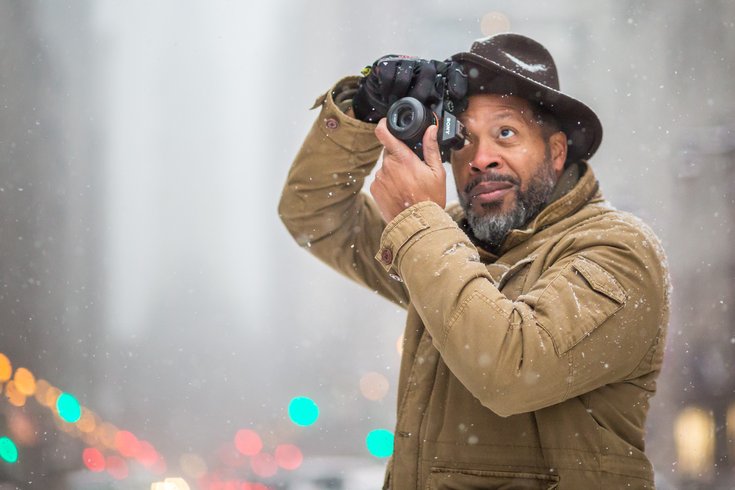
December 26, 2017
 Thom Carroll/PhillyVoice
Thom Carroll/PhillyVoice
Dr. James Posey III, an oncologist, makes a photograph on South Broad Street in Philadelphia during a recent snowfall. He says he uses a mirrorless Sony digital camera because it gives him more creative flexibility.
Whether treating a patient or peering through a lens, Dr. James Posey III is always looking for beauty and meaning in the unlikeliest of places.
An oncologist at Thomas Jefferson University Hospital in Center City, Posey describes both his medical work and his photography hobby as making something out of nothing.
“When treating patients with cancer, you are always trying to achieve the best possible outcome for the patient even when you might not feel like you have enough tools or the best circumstances to do so," he said. “Landscape photography is very similar. You have to work with the raw materials you are given to find a story to tell or an interesting perspective to present.”
Posey, 52, first fell in love with making images in a high school photography class. He would spend hours wandering around the local camera store learning about the equipment.
During his undergraduate years at Howard University, however, his interest drifted as he focused on his studies. Not until he returned to medical school did he pick up his camera again. What began as way to create memories for his graduating class had reignited a spark.
Posey has done some wedding and event photography over the years for friends, family and ministry, but's it's not his passion.
“The last event I photographed was about two years ago,” he said. “It is not my preferred type of photography because you have to gather people together, stage the shot and make sure the lighting is ideal. It is more structured and you are taking shots on demand. I enjoy the creativity of being able to capture something that is not obvious, to unearth hidden gems in everyday scenes and capturing them on film.”
Posey, who lives in Bella Vista, loves shooting locations, structures and architectural features he finds compelling, whether the alignment of bricks on a building, the shape of an arch or the reflection of light off the water at different times of day. He especially enjoys night photography in the winter months with all its glittering lights. “I love to capture the lights of moving vehicles contrasted against the stationary buildings,” he added.
The most challenging thing about photography is finding the time, especially with his busy medical practice, he said. But he carves out what time he can, even packing his camera when traveling to conferences if he knows there will be some downtime for exploration.
While he doesn’t have every weekend free, when he does, Posey loves to grab his camera and hop on his bicycle to search for interesting angles and perspectives. He finds it is better for the creative process. “More of your senses are awakened. You not only see the sights, but also hear, smell and touch them as well," he said. "I am not a nature boy, believe me, but there is a component of it that I appreciate.”
Some of his favorite places to photograph: Union Station in Washington, D.C., the San Diego Latter Day Saints Temple, and Broad Street at night in Philadelphia. Among places that are calling him for future shoots: the skyline entering the city from the I-95 North bridge, Race Street Pier, the factory smokestacks you see leaving Philadelphia on I-95 South and Boathouse Row at night.
Posey, a professor and director of the gastrointestinal program in medical oncology and co-leader of the Gastrointestinal Clinical Program at the Sidney Kimmel Cancer Center, uses a Sony mirrorless, digital camera because it offers him the most flexibility. His use of filters is limited to one: neutral density for a soft water effect.
To get the best story out of a structure, he explained, you really need to study it closely to figure out the best angles and most interesting details to emphasize. You are looking for a hidden story to tell and you need to be patient.
“Think about it this way," he says. "You are trying to capture a moment in time while hundreds of people are passing by the same spot oblivious to what you have uncovered.”
